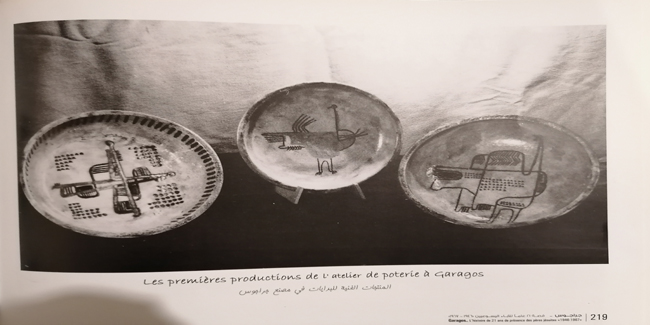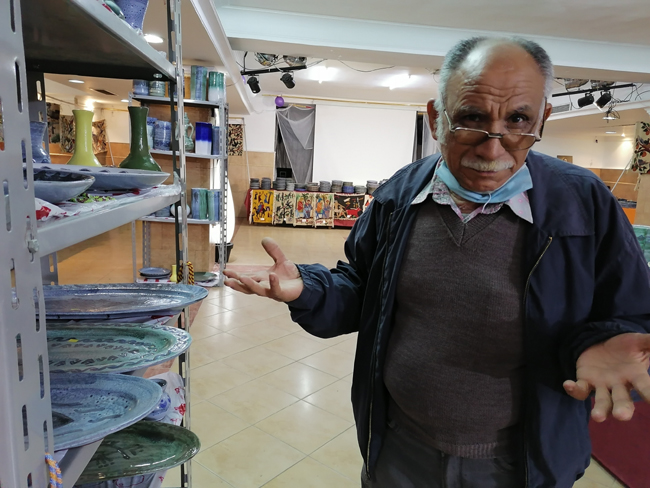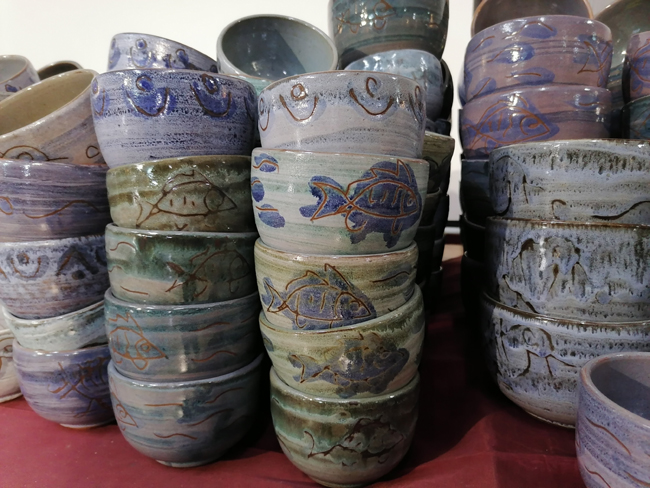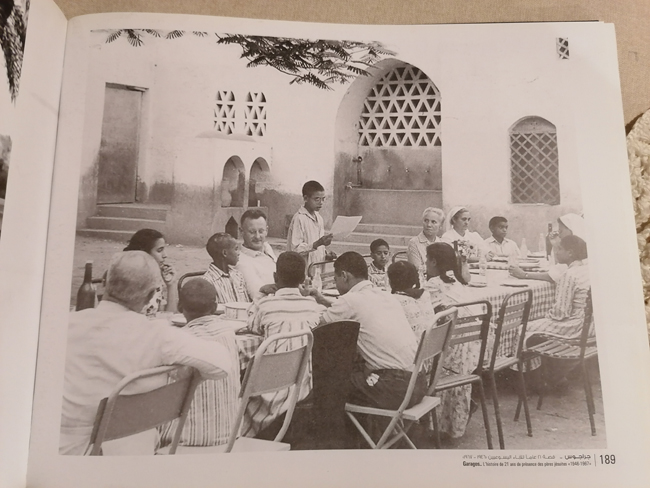At the premises of the Cordi Jesu Roman Catholic Church in Cairo, traces of Naqada’s predynastic civilisation in Egypt (4000-3000 BC) are on display.
The annual pottery exhibition of Garagous village, held from 6 to 12 December, represents a multicultural layer of Egyptian civilisation.
Garagous village, in Qena, enchants us every year with its unique pottery that waltzes between the shades of blue and green.

from the book garagous, the story of 21 years of jesuit brothers 1946_1967
“Every motif has its own historic connotation,” explained Fawaz Sidhom, one of the artists of Garagous who has been making pottery since 1963.
“Our pottery reflects many cultural eras, taking the colours adopted by the pharaohs; and motifs such as fish signs that represent blessings, and pigeon signs that symbolise peace from the Coptic heritage. And those little crescent motifs reflect the Islamic heritage,” he explained to Ahram Online.

by amira noshokaty
According to the book titled Garagous, The Story of 21 Years of Jesuit and Brothers 1946-1967, by Father William Sedhom, published in 2018, the idea of establishing a pottery workshop at the village of Garagous came in 1946 as part of the human development project of the Jesuit Brother’s Association.
From 1946 till 1967, Father Stephane Montgolfier and Father Maurice Fenoye launched their human development journey in Garagous, along with some nuns from Notre Dame des Apotre.

by amira noshokaty
Father Stephane listened to the needs of the peasants and consulted icons of Egyptian culture on ways to preserve and popularise Garagous’ heritage.
These icons included Tharwat Okasha, the late renowned Egyptian thinker and one-time culture minister; the late Hassan Fathy, famous architect; late writer Ahmed Ragab, and late renowned architect Wissa Wassef.
Soon, the idea for a complex housing a school, church, library, youth centre, and a workshop for pottery and tapestry making was conceptualised and built using Fathy’s unique and sustainable architecture.

from the book garagous, the story of 21 years of jesuit brothers 1946_1967
Since then, Garagous’ pottery gained new fame for its unique colours, lightness, and smoothness because of the filtering technique they use on the clay.
The book also reveals the similarities between the early work of Garagous artists and that of the predynastic Naqada period’s art effects, with both art styles making use of multiple repetitive strokes.

from the book garagous, the story of 21 years of jesuit brothers 1946_1967
Currently, the Handicraft Industry Chamber has trained 25 young people to learn the authentic art of Garagous pottery.
To appreciate a piece of Egypt’s colourful intangible heritage, we highly recommend visiting Garagous’ annual exhibition.

from the book garagous, the story of 21 years of jesuit brothers 1946_1967
The Garagous pottery exhibition is running till Saturday December 13, 2020 from 10am to 10pm, at the premises of the Cordi Jesu Roman Catholic Church Cairo, Abdel-Khalek Tharwat Street, Downtown, opposite to the Journalists Syndicate.
Short link: